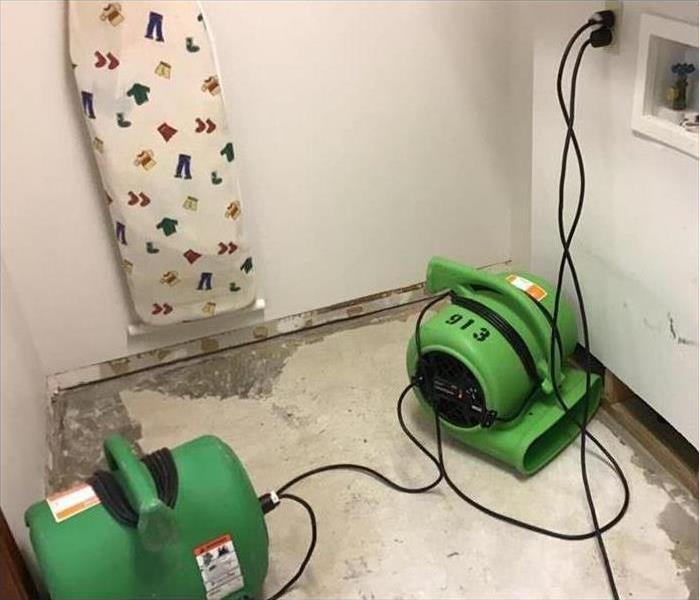3 Facts About Category One Water Damage
4/17/2019 (Permalink)
Restoration professionals categorize water damage based on the liquid’s contamination levels. Category One damage involves clean water from a broken supply line. Category Two water may contain chemicals or microbes and Category Three water is highly contaminated and may contain solid waste. Here are three facts for property owners or managers dealing with water damage at a building in Olathe, KS.
1. Category One Water Is Clean
Water in supply lines is typically clean and treated. This water should not contain any dangerous chemicals, microbes or solid waste. Standing water can be pumped out or extracted with a mop or wet vac.
2. Category One Water Requires Drying
As long as a building owner or manager acts quickly, damage caused by clean water can simply be dried. There is no need for disinfection as long as standing water is extracted and the removal process begins within 24 to 48 hours. Rather than risking worsening conditions or secondary damage, an owner or manager should hire mitigation and restoration professionals to extract water and promote drying.
3. Category One Water Can Degrade
After 48 hours, standing Category One water may degrade into Category Two gray water due to exposure to building materials, contents and systems. If water is left standing for days, bacteria will multiply, and mold may begin to grow. Category One water can eventually degrade into Category Three black water. Areas exposed to Category Two or Category Three water should be disinfected prior to drying.
A property owner or manager should quickly remove clean water introduced into a structure by a broken pipe. There is no need for disinfection as long as a leak is stopped, standing water is extracted and the area starts to dry within 24 to 48 hours. Even though Category One water is clean, it can still cause major damage to a building in Olathe, KS.






 24/7 Emergency Service
24/7 Emergency Service
